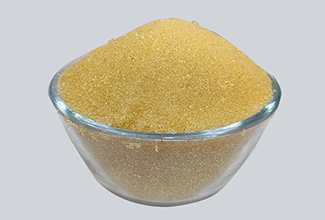Selection of Ion Exchange Resin
Selecting the right ion exchange resin for your application requires careful consideration of several factors. Here are some key steps to guide you:
1. Define your application:
- What are you trying to achieve with the resin?
Is it water softening, demineralization, metal removal, or something else?
- What is the composition of the feed solution (water or other liquid)?
This includes identifying the ions you want to remove and their concentrations.
- What level of purity do you need in the treated water?
- What are the flow rate and operating pressure requirements?
2. Consider the resin properties:
- Functional group:
Strong acid cation (SAC), weak acid cation (WAC), strong base anion (SBA), weak base anion (WBA), chelating resin, etc.
Each type has specific selectivity for different ions.
- Capacity:
How much of the target ion(s) can the resin remove per unit volume?
- Regeneration efficiency:
How easily can the resin be regenerated (e.g., with NaCl for SAC resins)?
- Physical and chemical stability:
Can the resin withstand the pH, temperature, and pressure of your application?
- Bead size and porosity:
These affect flow rate, pressure drop, and regeneration efficiency.
- Food grade requirements:
If applicable, select a resin certified for food contact.
3. Consult with experts:
Ion exchange resin manufacturers and water treatment specialists can provide valuable guidance based on your specific needs.
They can recommend suitable resins, suggest pilot testing, and assist with system design and optimization.
Additional tips:
Cost: Compare the price of different resins, considering their capacity, regeneration costs, and lifespan.
Sustainability: Look for resins with certifications for responsible sourcing and eco-friendly production.
Availability: Ensure the chosen resin is readily available and supported by the supplier.
Remember, selecting the right ion exchange resin is crucial for the success of your application. By carefully considering your needs and consulting with experts, you can ensure optimal performance and cost-effectiveness.
-
.png) Cation Polyacrylamide ResinPurity : 99.9%Color : off-whiteQuality Control : Each Lot of Cationic Polyacrylamide was tested successfully
Cation Polyacrylamide ResinPurity : 99.9%Color : off-whiteQuality Control : Each Lot of Cationic Polyacrylamide was tested successfully -
 001X8 water softener ion exchange ResinIonic form:Na+Appearance: Claybank to tan transparent spherical particle.The degree of crosslinking : 8%.
001X8 water softener ion exchange ResinIonic form:Na+Appearance: Claybank to tan transparent spherical particle.The degree of crosslinking : 8%. -
 001X7 Cation Exchange ResinIonic form:Na+Appearance: Claybank to tan transparent spherical particle.The degree of crosslinking : 7%.
001X7 Cation Exchange ResinIonic form:Na+Appearance: Claybank to tan transparent spherical particle.The degree of crosslinking : 7%.

